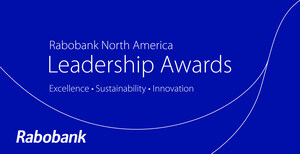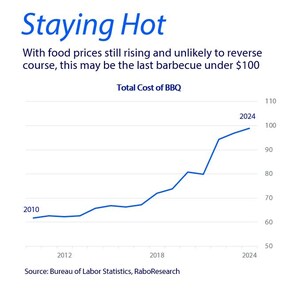NEW YORK, Oct. 8, 2015 /PRNewswire/ -- The third quarter brought heart palpitations for many on the sell-side of the dairy market. From already extreme lows, prices of key commodities fell a further 12% to 26% through the first half of the period in international trade, before recovering most of that ground by the end of September. Globally more milk was produced than the market needs in the third quarter and a significant inventory overhang is now sitting in the hands of first buyers and, now, sellers. While the world is for now awash with milk, the rebalancing of fundamentals for new milk is now near at hand, according to the Rabobank Dairy Quarterly Q3 2015.
Milk production appears to have continued to expand faster than demand in recent months. The EU was the key driver of supply growth during the period, as investment timed to coincide with the removal of quotas came online. But most regions continued to expand production. "Rabobank expects the market for new milk to tighten in 1H 2016, as low milk prices in NZ and further price falls elsewhere put the brakes on milk production, while demand rises as falling prices are passed on," says Rabobank Global Strategist Tim Hunt.
Outlook
- Milk prices are painfully low in New Zealand and will become more uncomfortable in many regions in the coming months. Together with a modest growth in consumption within export regions, this will reduce exportable surpluses of new milk by 7% in 1H 2016—tightening the market somewhat during this period and changing the market sentiment.
- Lower pricing and some improvement will foster improved buying in deficit regions. Russia will remain out of the market because of the trade ban, and Chinese imports will only stabilize (not increase) in 1H 2016.
Nevertheless, these dynamics will see excess inventories gradually eroded as 1H 2016 progresses, with stocks normalizing by around mid-year. Pricing pressure will build as 1H progresses—from modest in the later stages of Q1 2016 to significant late in Q2.
Upside influences
A strong El Nino climate pattern is currently active. This brings an increased risk (though no certainty) that it could lead to adverse weather in key production regions, tightening supply over the forecast period, particularly as milk prices in some regions are unlikely to be high enough to justify increased supplementary feeding if pastures dry up.
Downside influences
The removal of EU quotas, combined with the substantial depreciation of the euro in the last nine months, could lead to greater surplus growth in the EU than we currently forecast.
Risks are currently weighted to the downside for the global economy, and they include potential adverse impacts from further financial market volatility, China challenged in its attempt to rebalance its economy or the escalation of geopolitical tensions.
About Rabobank
Rabobank Group is a global financial services leader providing wholesale and retail banking, leasing, and real estate services in more than 40 countries worldwide. Founded over a century ago, Rabobank today is one of the largest banks in the world, with nearly $1 trillion in assets, and ranks among the 10 safest banks globally. In the Americas, Rabobank is a premier bank to the food, agribusiness and beverage industry, providing sector expertise, strategic counsel and tailored financial solutions to clients across the entire food value chain.
For your social media ready version of this press release:
http://rabobank-food-agribusiness-research.pressdoc.com
Or visit: www.rabobank.com/f&a and https://far.rabobank.com/en/home/index.html
Follow us on Twitter:
@rabowholesale
@rabofoodagri
Logo - http://photos.prnewswire.com/prnh/20150819/259591LOGO
SOURCE Rabobank
Related Links
WANT YOUR COMPANY'S NEWS FEATURED ON PRNEWSWIRE.COM?
Newsrooms &
Influencers
Digital Media
Outlets
Journalists
Opted In






Share this article